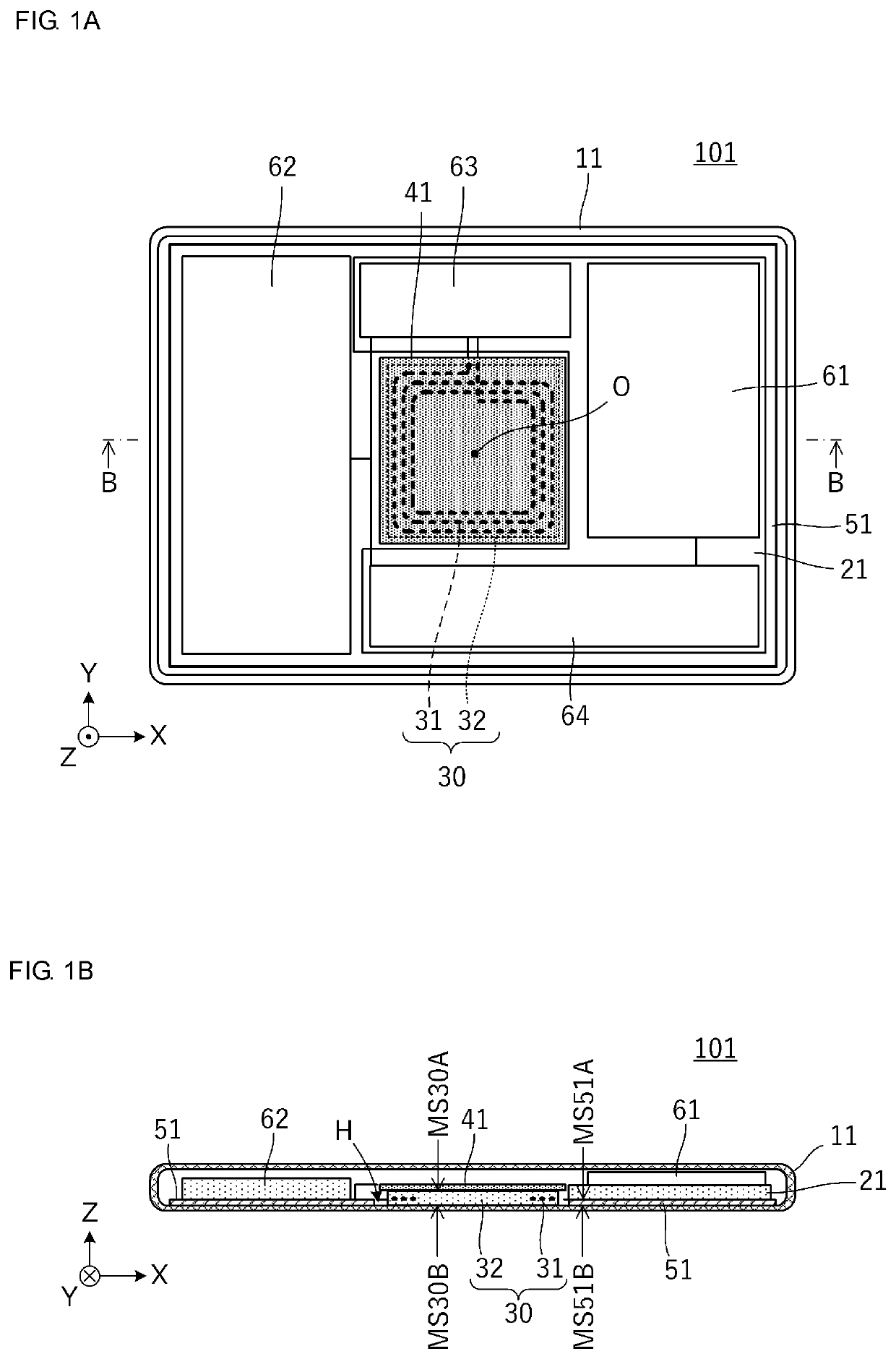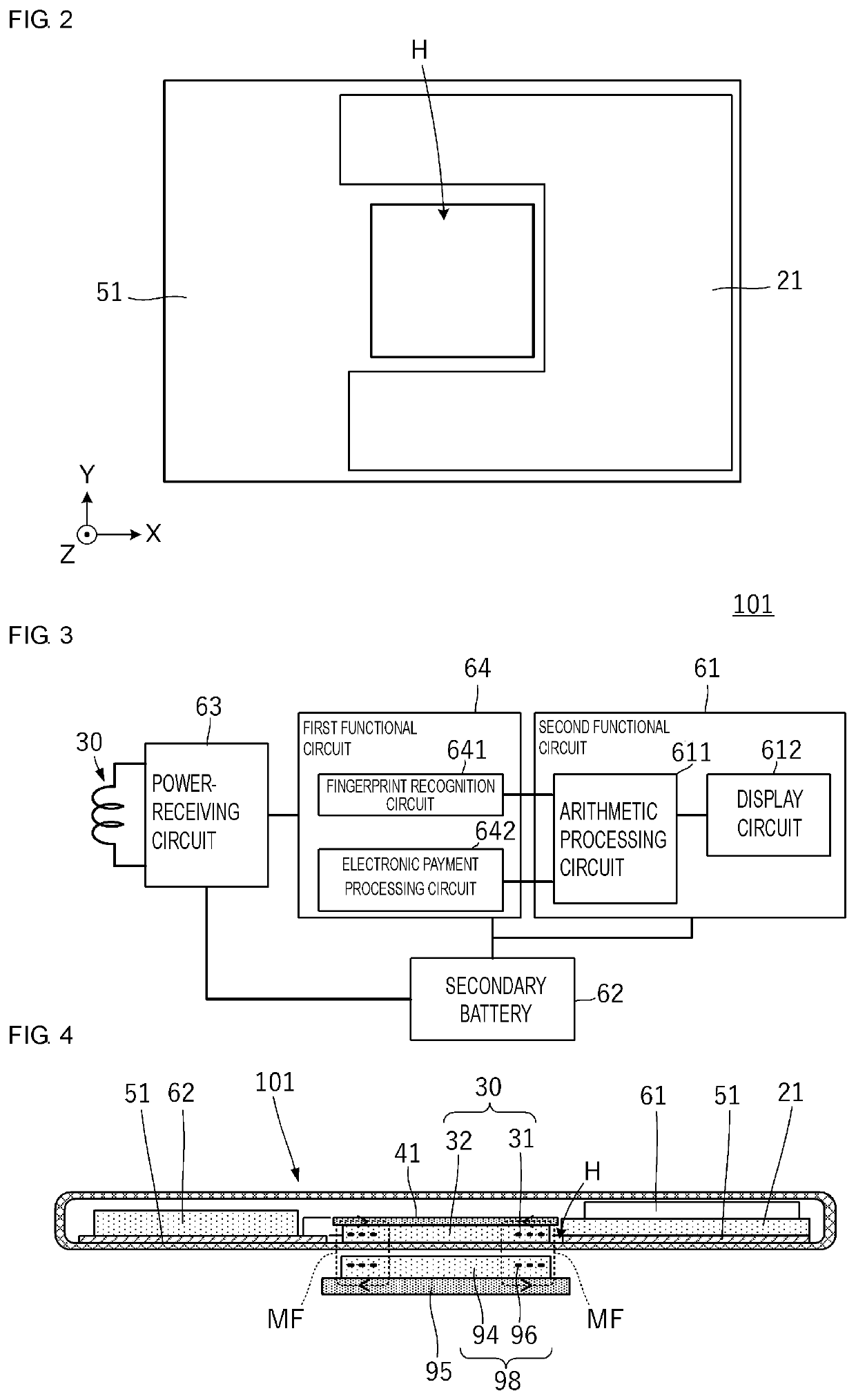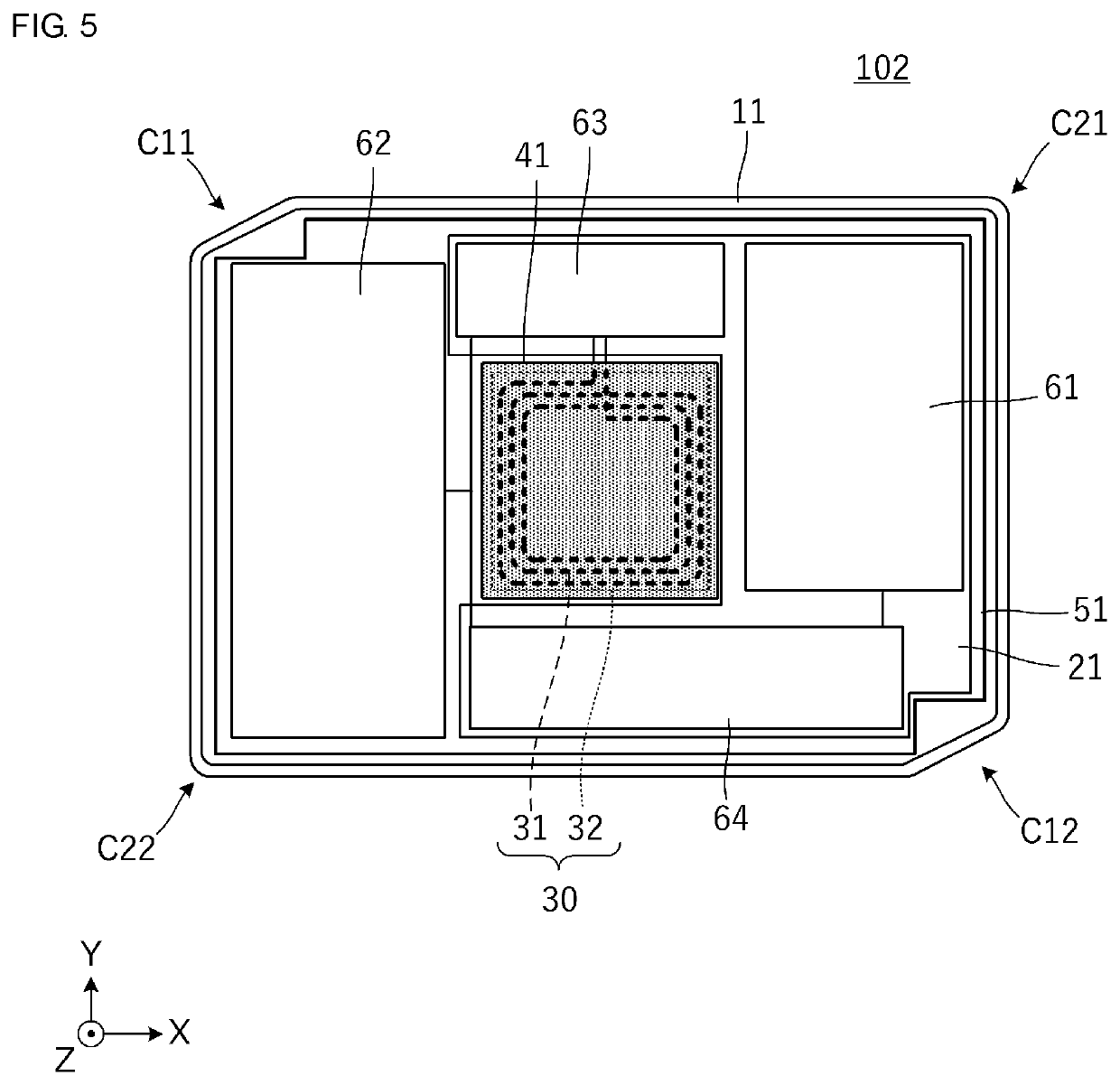Planar-type wireless power-receiving circuit module
a power-receiving circuit and wireless technology, applied in the direction of transformer/inductance magnetic cores, inductances, circuit arrangements, etc., can solve the problems of electromagnetic interference with electronic components or circuitry, weak magnetic field coupling between the loop antenna for power reception and the external loop antenna for power transmission, and unwanted magnetic field coupling between the external and internal, etc., to achieve enhanced magnetic flux passing, high density, and electromagnetic interference
- Summary
- Abstract
- Description
- Claims
- Application Information
AI Technical Summary
Benefits of technology
Problems solved by technology
Method used
Image
Examples
first embodiment
[0020]FIG. 1A is a plan view of a planar-type wireless power-receiving circuit module 101 according to a first embodiment, with an upper portion of a housing of the module being omitted. FIG. 1B is a sectional view of the planar-type wireless power-receiving circuit module 101 taken along line B-B in FIG. 1A. FIG. 2 is a plan view of a planar ground conductor 51 and a substrate 21.
[0021]The planar-type wireless power-receiving circuit module 101 includes the planar ground conductor 51 and the substrate 21 (see FIG. 2). The planar ground conductor has, in the middle section thereof, a cavity H, which has a square shape. The substrate 21 is disposed on a first main surface MS51A of the planar ground conductor 51. The substrate 21 is a multilayer substrate including dielectric layers stacked on top of each other in a manner so as to form electronic circuitry. The substrate 21 is a rigid substrate including an insulating base that is inflexible. The planar-type wireless power-receiving ...
second embodiment
[0041]The following describes a second embodiment, or more specifically, a planar-type wireless power-receiving circuit module in the form of a card for installation in a wireless power-transmitting device.
[0042]FIG. 5 is a plan view of a planar-type wireless power-receiving circuit module 102, with an upper portion of a housing of the module being omitted. The main difference between the planar-type wireless power-receiving circuit module 101 in FIG. 1A and the planar-type wireless power-receiving circuit module 102 is in the shape of the housing 11. When viewed in plan, the housing 11 of the planar-type wireless power-receiving circuit module 102 according to the present embodiment is substantially rectangular and has four corner sections, which are denoted by C11, C12, C21, and C22, respectively. The corner sections C11 and C12 are herein referred to as a first pair of diagonally opposite corners, and the corner sections C21 and C22 are herein referred to as a second pair of diag...
third embodiment
[0054]The following describe a third embodiment, or more specifically, a planar-type wireless power-receiving circuit module including a power-receiving coil whose configuration is different from the configurations described in the first and second embodiments.
[0055]FIG. 8A is a longitudinal sectional view of a planar-type wireless power-receiving circuit module 103A according to the third embodiment. As is clear from comparison with the example illustrated in FIG. 1B, the magnetic sheet 41 covers not only an upper face but also four lateral faces of the power-receiving coil substrate 32. Specifically, the magnetic sheet 41 covers five outer faces of the power-receiving coil substrate 32 that are not in contact with an inner bottom face of the housing 11. The magnetic sheet on the four lateral faces is part of the magnetic path passing through a region on the outside of the coil opening of the power-receiving coil conductor 31. This structure enables the magnetic sheet 41 to serve m...
PUM
| Property | Measurement | Unit |
|---|---|---|
| magnetic flux | aaaaa | aaaaa |
| conductive | aaaaa | aaaaa |
| flexible | aaaaa | aaaaa |
Abstract
Description
Claims
Application Information
 Login to View More
Login to View More - R&D
- Intellectual Property
- Life Sciences
- Materials
- Tech Scout
- Unparalleled Data Quality
- Higher Quality Content
- 60% Fewer Hallucinations
Browse by: Latest US Patents, China's latest patents, Technical Efficacy Thesaurus, Application Domain, Technology Topic, Popular Technical Reports.
© 2025 PatSnap. All rights reserved.Legal|Privacy policy|Modern Slavery Act Transparency Statement|Sitemap|About US| Contact US: help@patsnap.com



